Bill Cooper’s After the Flood is a study of the history of early Europe based on the genealogies and legends that have been passed down through various European peoples, focusing on those who today make up the United Kingdom. A favorite among young-Earth creationists, After the Flood boasts 4.6 out of 5 stars in 100+ reviews on Amazon. With the release of an expanded edition in 2015, I thought it time for a re-read, hoping that Cooper had cleaned up a few of the more glaring errors found in the original 1995 edition. Unfortunately, he has not.
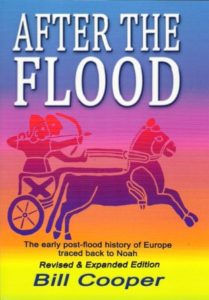
Don’t get me wrong – this is a well-researched and unique book, worthy of a read by any student of European history. By comparison of other genealogies and histories, including the Romans, Irish, and even the (dot) Indians, Cooper demonstrates that the post-flood Biblical patriarchs are not simply a fiction generated by Hebrew storytellers, but the actual progenitors of the modern nations. And while one’s presuppositions are liable to color one’s acceptance of this thesis regardless of the evidence, the evidence is worth a look.
For my part, I am quite sympathetic to Cooper’s argument that modernist scholars tend to vastly overplay their hands, and that many of their studied conclusions are nothing but smuggled assumptions. I have seen too many occasions where scholars have converted an assumption (e.g. the number of generations they reckon a pagan court bard could remember) into a conclusion, without appeal to any facts at all.*
But it’s also worth looking at the places where Cooper’s arguments fall short, which I hope to do herein.
For example, there are several places where Cooper is either careless with his sources or leaves information out on purpose. I’ll give him the benefit of the doubt, but the absence of some very important information severely undercuts his case.
The first case has to do with the Anglo-Saxon Chronicles, which Cooper notes contain the phrase, “from Adam to the Flood were 2242 winters” (his translation).
It would be interesting to discover whence the Saxons got this figure of 2242 years for the antediluvian period, for it does not appear in the Latin Vulgate which gives 1656 for this period, thus agreeing with the Hebrew; and they were not familiar with the Septuagint version which gives in any case a period of 2256 years for the antediluvian era. However, their figure does agree exactly with that of the Britons, as passed down to us by Nennius.
— P. 94, Revised Edition
That last sentence provides us a clue missed by Cooper. I went to Nennius and checked the sources that he claimed to use – one of them was Eusebius. Cooper apparently figured that Nennius was referring to Eusebius’ Historia Ecclesiastica, which would likely not be a useful source to study genealogies – that explains why it does not appear in Cooper’s bibliography. However, Eusebius’ Chronicle, which attempts to present a more universal history, provides a chronology broken down almost exactly like that of Nennius. No surprise there. The period Eusebius notes for Adam to the Flood, according to the Septuagint, is 2242 years. We have a Bingo.
Nennius’ next number, from the flood to Abraham, is noted as 942 years, of which Cooper notes:
We would say today that there are certain points on which this early British chronology is patently wrong. For example, there are not 942 years between the Flood and Abraham, but only ca 427 until Abraham’s entry into Canaan….[Therefore] we have to conclude that [Nennius] passed down to us, characteristically unedited and uncorrected, a faulty (and therefore much older?) source.
–(ibid.)
However, if one checks Eusebius for the time between the flood and Abraham, the result is unsurprising: 942 years, based again on the Septuagint, which Cooper should have noticed as he just used it to check the previous number.
Nennius doesn’t use all of Eusebius’ numbers, but in a strange twist, neither do Nennius’ numbers add up to his total. Instead, his total is exactly the total provided by Eusebius. Nennius is not passing us a British source here at all but a Roman Christian one that he informs us in his prologue he is using.
Not only that, but Eusebius in that section compares the numbers given in the Septuagint, the Hebrew (which formed the basis of the Vulgate), and the Samaritan texts, and gives his reasons for preferring the Septuagint.
So not only were the British Christians (and therefore probably the Saxon Christians) familiar with the Septuagint, they had a recognized Church authority telling them why it was to be preferred over the Vulgate for this very number! I also added up the Eusebius’ numbers using my own copy of the Septuagint: 2242 years rather than Cooper’s 2256. Cooper is flat out wrong here.
The second case had to do with the itinerary that Geoffrey of Monmouth applies to Brutus in Book I, Chapter 12 (it also appears in Cooper’s translation of Tysilio’s Chronicle, available here).
Cooper uses it to posit a first century source for Brutus and it is such a source, but perhaps not for Brutus as Geoffrey and Tysilio state. The same itinerary, with exactly the same landmarks noted (but without Geoffrey’s pirates) is found in Nennius 15. But rather than applying to Brutus (of whom Nennius knows as he has several separate Bruts) it comes as a tradition via “the most learned of the Scots” and is supposedly the trek taken by “a Scythian of noble birth” leaving Egypt about the time of Moses. Since Nennius knows of Brutus but does not connect this with Brutus, Cooper needs to explain how this can serve as evidence for the antiquity of Geoffrey’s (and Tysilio’s) Brut rather than simply being lifted from Nennius or the Scots.
The final case has to do with his treatment of the Scaef-to-Woden line as it applies to the Danish, Norwegian, and Icelandic kings. In my opinion, Cooper’s illustration of the line from various sources proves both its antiquity and its integrity. He lines up six sources from four nations, and though the sources have linguistic differences (Geat could be Geta or Great or Jat) and gaps in different places, all the names are recognizably the same and in the same order. Three of the sources trace Scaef to Noah, three do not, which shows the line itself is not a pious fraud.
Cooper has Scaef at the top of each list. However, in checking his sources I discovered that his chart is quite misleading. In the Prose Edda (his Icelandic source), there should not be a question mark above Seskef. That genealogy, in part, reads like this:
“Their son was Lóridi, who resembled his father; his son was Einridi, his son Vingethor, his son Vingener, his son Móda, his son Magi, his son Seskef, his son Bedvig, his son Athra (whom we call Annarr), his son Ítermann, his son Heremód, his son Skjaldun (whom we call Skjöld), his son Bjáf (whom we call Bjárr), his son Ját, his son Gudólfr, his son Finn, his son Fríallaf (whom we call Fridleifr); his son was he who is named Vóden, whom we call Odin.”
—Prose Edda, Prologue, 3
Seskef is not at the top but in the middle of the Prose Edda genealogy, the something-something grandson of High King Priam of Troy. It does not mean the line itself is corrupt, but it appears to throw a nasty wrench in Cooper’s assertion the Icelanders considered Seskef to be Japheth the son of Noah. And the worst part is that Cooper does not even address it. While it appears that the names in his chart come from Klaeber’s Beowulf and the Fight at Finnsburg, a respected source on that epic poem, the name Snorri Sturlson, who is the author of the Prose Edda, does not appear in the bibliography. Perhaps Cooper didn’t even consult it.
These three issues are indicative of the kinds of source problems any author will have to deal with – Cooper is by no means alone here. But it also means that the Christian who takes this study seriously will also be forced to deal with them, and probably in a more comprehensive fashion than Cooper has.
While After the Flood remains a valuable resource for Christian students of European history, it is by no means a book one can accept without giving serious consideration to the occasional places the book falls short of the whole truth.
* Biblical criticism is full of such legerdemain, alas.

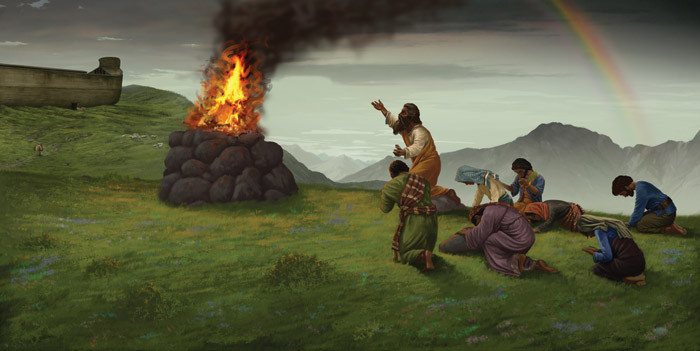


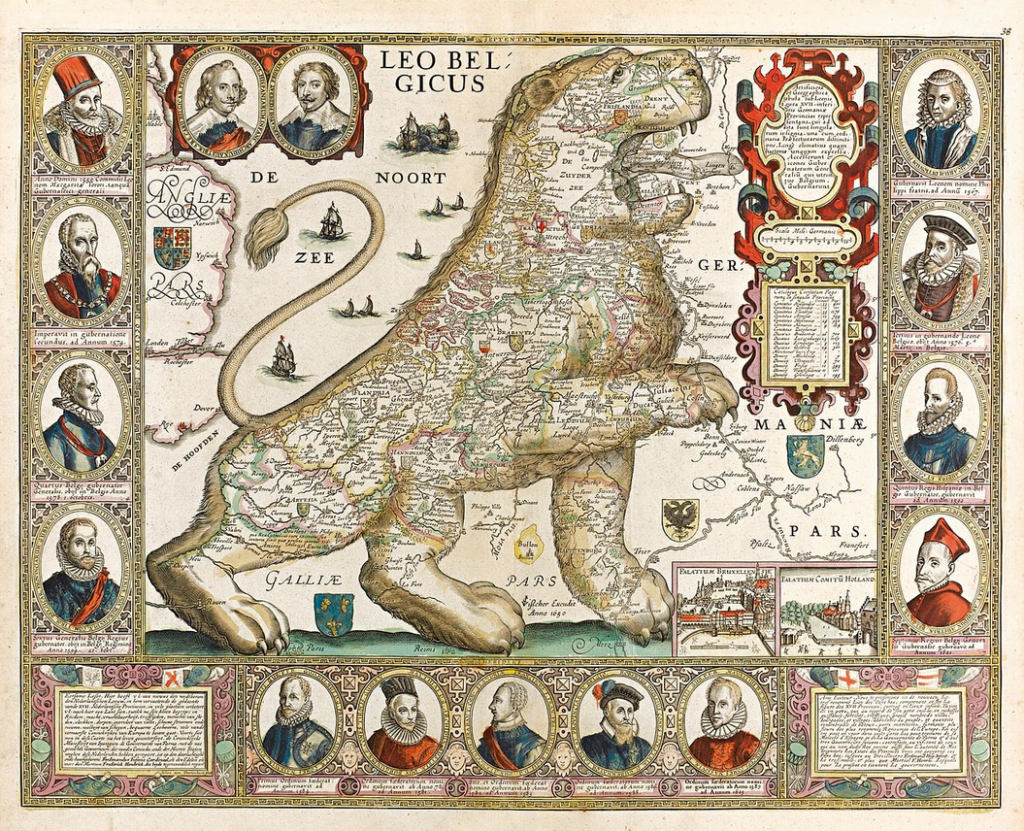


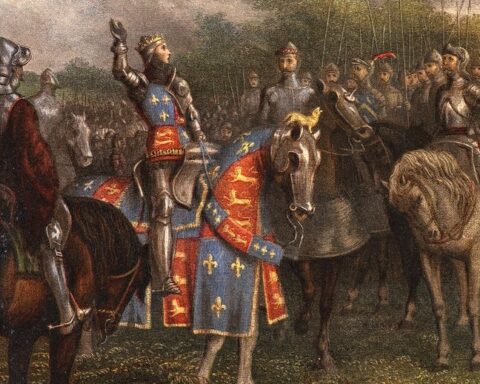
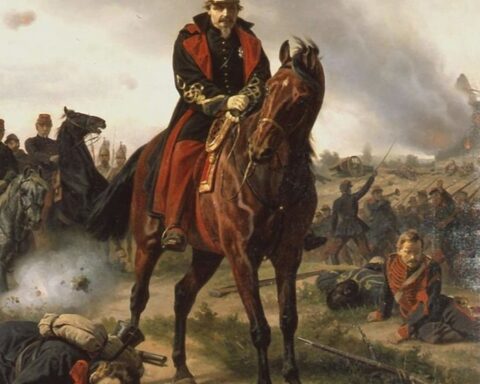
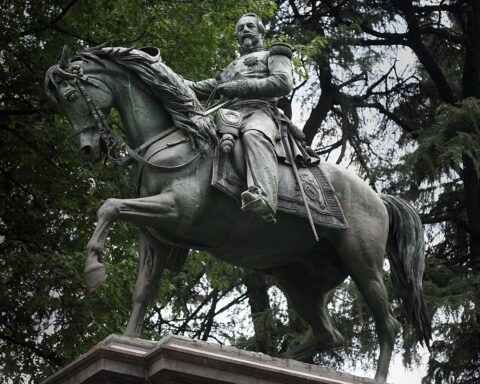
5